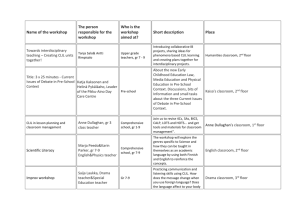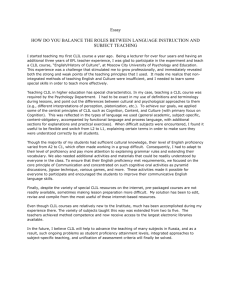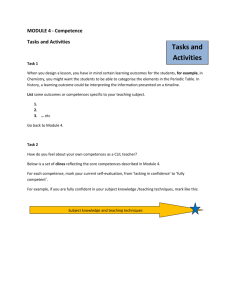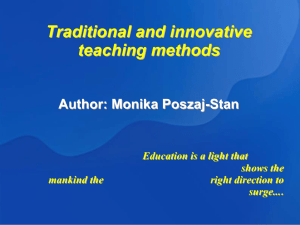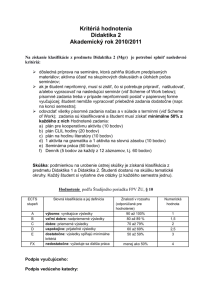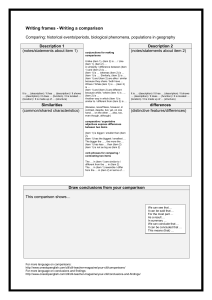Abstract
advertisement
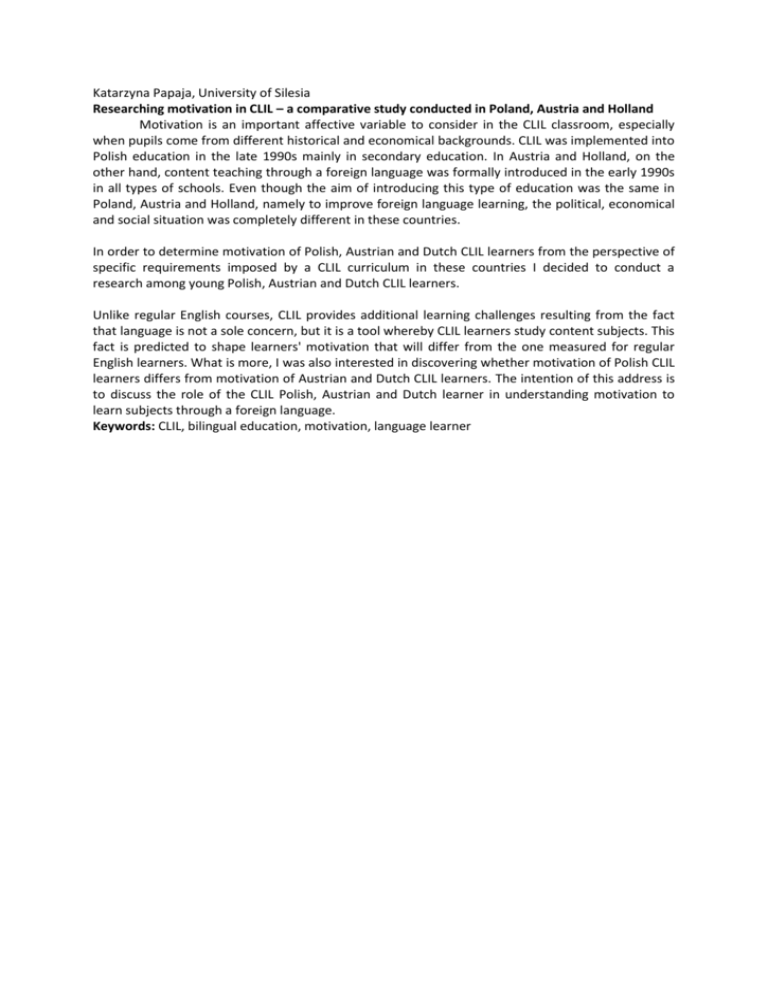
Katarzyna Papaja, University of Silesia Researching motivation in CLIL – a comparative study conducted in Poland, Austria and Holland Motivation is an important affective variable to consider in the CLIL classroom, especially when pupils come from different historical and economical backgrounds. CLIL was implemented into Polish education in the late 1990s mainly in secondary education. In Austria and Holland, on the other hand, content teaching through a foreign language was formally introduced in the early 1990s in all types of schools. Even though the aim of introducing this type of education was the same in Poland, Austria and Holland, namely to improve foreign language learning, the political, economical and social situation was completely different in these countries. In order to determine motivation of Polish, Austrian and Dutch CLIL learners from the perspective of specific requirements imposed by a CLIL curriculum in these countries I decided to conduct a research among young Polish, Austrian and Dutch CLIL learners. Unlike regular English courses, CLIL provides additional learning challenges resulting from the fact that language is not a sole concern, but it is a tool whereby CLIL learners study content subjects. This fact is predicted to shape learners' motivation that will differ from the one measured for regular English learners. What is more, I was also interested in discovering whether motivation of Polish CLIL learners differs from motivation of Austrian and Dutch CLIL learners. The intention of this address is to discuss the role of the CLIL Polish, Austrian and Dutch learner in understanding motivation to learn subjects through a foreign language. Keywords: CLIL, bilingual education, motivation, language learner

